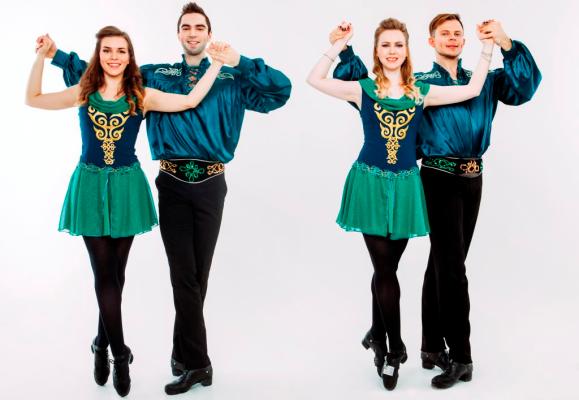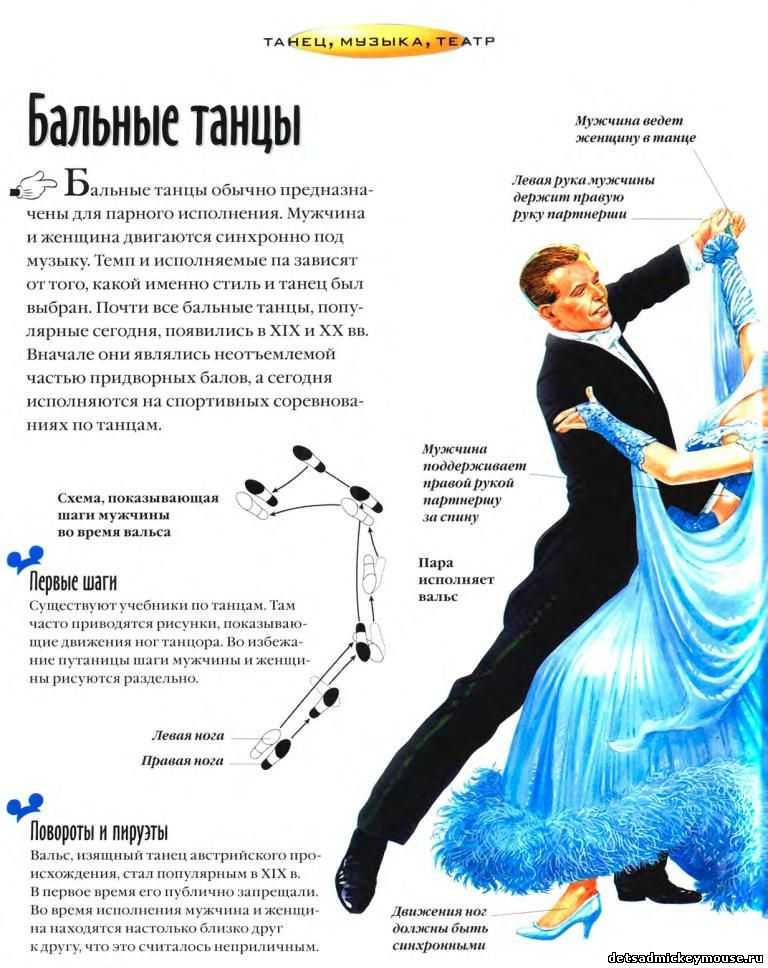What is theatrical dance and how did it originate
Origins of Musical Theatre Dance – Human Kinetics
This is an excerpt from Beginning Musical Theatre Dance With Web Resource by Diana Dart Harris.
The first dramas that included music and dance were presented by the Greeks in the 5th century BCE. Those dramas served as models for the Romans, who expanded the dance element. During the Middle Ages, groups of traveling actors used dance to tell stories, and during the 12th and 13th centuries, the Catholic Church staged dramas that included music and dance to reinforce morality lessons and bring Biblical stories to life. As the Middle Ages ended and the Renaissance began, Greek dramas were resurrected. Some of these dramas, like Monteverdi's Orfeo (1607), which was performed at the Gonzaga court, and Purcell's Dido and Aeneas (1689), which was performed in England, featured dance and movement sequences. Pantomime performances were also popular and included singing, acrobatics, clown acts, and dialogue as well as dance. The dancing included in these pantomimes was considered show dance and could be anything from classic hornpipe dances to tightrope dancing. Additionally, dance was used between acts of Shakespearian plays and was used to entertain audiences between the acts of John Gray's The Beggar's Opera in 1728. These dances usually featured an individual dancing alone or leading a group of dancers who performed some type of Scottish folk dance.
A recreation of a Greek games dance.
Did You Know?
The Romans created the first tap shoes by nailing bits of metal to the soles of their sandals so that the dance steps could be heard.
Musical Theatre Dance in Colonial America
Across the ocean in colonial America, theatre was kept alive by British acting troupes. The Beggar's Opera, which premiered in Europe in the 1720s, was New York's first documented musical performance in 1750. In 1767 the Theatre on John Street opened and became a main performance space in New York for the remainder of the 18th century. The comic opera The Archers, performed there in 1796, is considered the first American-born musical (Kenrick, 2011). During the Revolutionary period in America (1764 - 1789), some members of the Continental Congress voiced their opposition to theatres and play-going because those pastimes were considered scandalous and distasteful (Kenrick, 2011). This opposition led to several of the 13 colonies banning public performances, but try as people might, keeping others from dancing is difficult, and even legislation could not stop it. Between 1750 and 1843, white men in black face traveled around the country, performing songs and dances in circuses and as entertainment during play intermissions (Kenrick, 2011). These intermission performances eventually developed into full-length minstrel performances in the mid-1800s.
The comic opera The Archers, performed there in 1796, is considered the first American-born musical (Kenrick, 2011). During the Revolutionary period in America (1764 - 1789), some members of the Continental Congress voiced their opposition to theatres and play-going because those pastimes were considered scandalous and distasteful (Kenrick, 2011). This opposition led to several of the 13 colonies banning public performances, but try as people might, keeping others from dancing is difficult, and even legislation could not stop it. Between 1750 and 1843, white men in black face traveled around the country, performing songs and dances in circuses and as entertainment during play intermissions (Kenrick, 2011). These intermission performances eventually developed into full-length minstrel performances in the mid-1800s.
Minstrelsy and Vaudeville
Minstrel shows were black song and dance parodies born when traveling blackface performers named themselves the Virginia Minstrels and presented a full-length show in 1843. But those minstrel shows were not allowed on Broadway, which was considered New York's cultural center and was meant for the elite citizens who enjoyed operas and plays. The minstrel shows were performed at the Bowery, which was where the lower class gathered. During the minstrel era, which lasted into the early 1900s, dance steps were officially given names that were written down.
But those minstrel shows were not allowed on Broadway, which was considered New York's cultural center and was meant for the elite citizens who enjoyed operas and plays. The minstrel shows were performed at the Bowery, which was where the lower class gathered. During the minstrel era, which lasted into the early 1900s, dance steps were officially given names that were written down.
In 1866 a production called The Black Crook was scheduled to be performed in New York at Niblo's Garden. Meanwhile, a Parisian ballet company had been booked to perform at the Academy of Music. A fire at the Academy of Music led to a merger of the ballet performance with the production of The Black Crook. The result was a 5 1/2-hour play with added songs and dances. The songs and dances had no relationship to the plot, making the production a circus-like spectacle that showcased individual dancers wearing only tight-fitting bodices and tights. The Black Crook was the first production in the United States to run longer than a year, and it marked the birth of musical theatre in the United States.
The final scene from The Black Crook.
The Black Crook paved the way for the burlesque and vaudeville shows of the late 1800s. The burlesque shows of this decade featured women who wore costumes that showed the shapes of their bodies. Their performances entertained the middle and lower classes and used music and dance to mock operas, plays, and the upper-class socialites. Vaudeville shows were a series of unrelated acts as part of an evening's entertainment that ignited interest in all kinds of dance, including Irish dance, clogging, tap, comic dancing, acrobatics, fancy dancing, skirt dancing, and toe dancing. Vaudeville was the training ground for people who would go on to perform in and create the Broadway musicals of the 20th century.
Did You Know?
The toe dancing done in vaudeville shows was very different from classical ballet dancing en pointe. It involved the dancers doing tricks, like jumping rope, while dancing on their toes.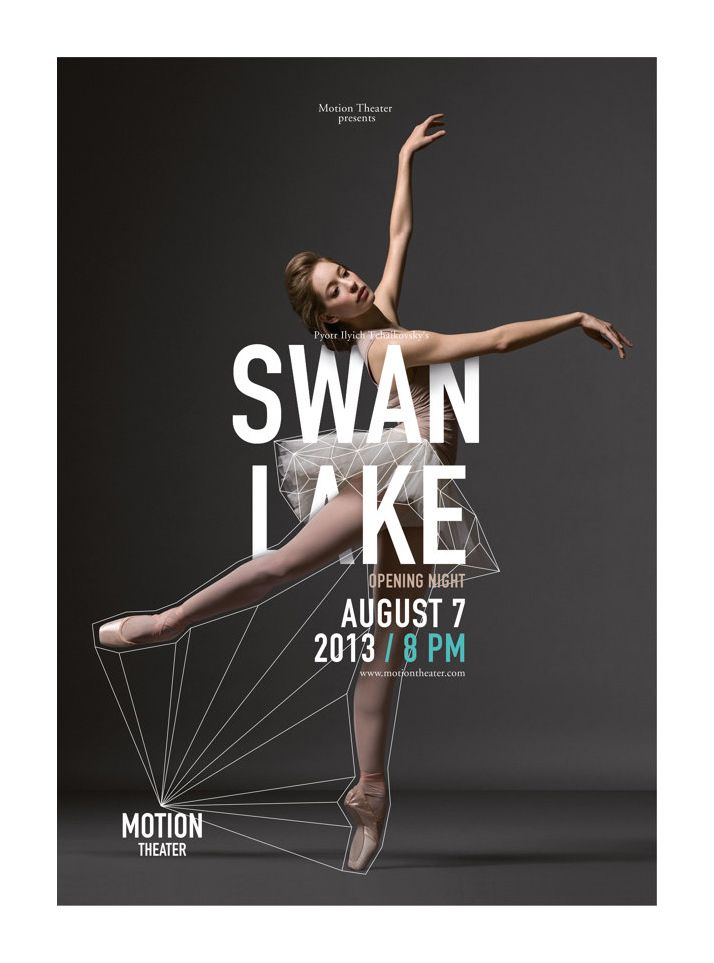 Some dancers even attached metal to the tips of their shoes to tap out rhythms while dancing.
Some dancers even attached metal to the tips of their shoes to tap out rhythms while dancing.
Ballroom, Ragtime, and Chorus Girls
In the early 1900s, ragtime music, which combined European folk songs with West African drum rhythms, found its way onto the theatrical stage. The dance portions of performances began to expand. Dance directors gained recognition and focused on how the stage could be used and how the dances looked from an audience perspective. Additionally, dance instructors spent a lot of time training dancers to perform in specific ways. When Vernon Castle (1887 - 1918) and Irene Castle (1893 - 1969) refined and polished the dances that the black population had been doing to ragtime music, ballroom dancing was born. The Castles were responsible for making ballroom dance popular and altering those social dances to make them interesting for an audience to watch.
In the early 1900s, John Tiller (1854 - 1925) founded a school in London, England, that offered dance training to women, who became known as London's Tiller Girls. They were trained to perform in unison, to march in military formations with military precision. Tiller provided dancers for London's revues and musical comedies and brought girls to the United States to dance in vaudeville shows and musical plays like The Man in the Moon (1899) and The Casino Girl (1901). As time passed, he added can-can kicks and vaudeville-type steps to their training. Similar schools soon opened in the United States.
They were trained to perform in unison, to march in military formations with military precision. Tiller provided dancers for London's revues and musical comedies and brought girls to the United States to dance in vaudeville shows and musical plays like The Man in the Moon (1899) and The Casino Girl (1901). As time passed, he added can-can kicks and vaudeville-type steps to their training. Similar schools soon opened in the United States.
Ned Wayburn (1874 - 1942) founded the Studio of Stage Dancing in 1905 in Manhattan and created kick lines. Although he believed that all dancers needed to be trained, his first priority was appearance. Dancers were chosen for shows because of their beauty, and he was the first dance director to demand that all the dancers in his chorus line be the same height.
His dances contained intricate, fast steps, and he demanded musicality and smiles. Wayburn effectively used tableaus, or groups of posed, still dancers, to depict scenes on the stage.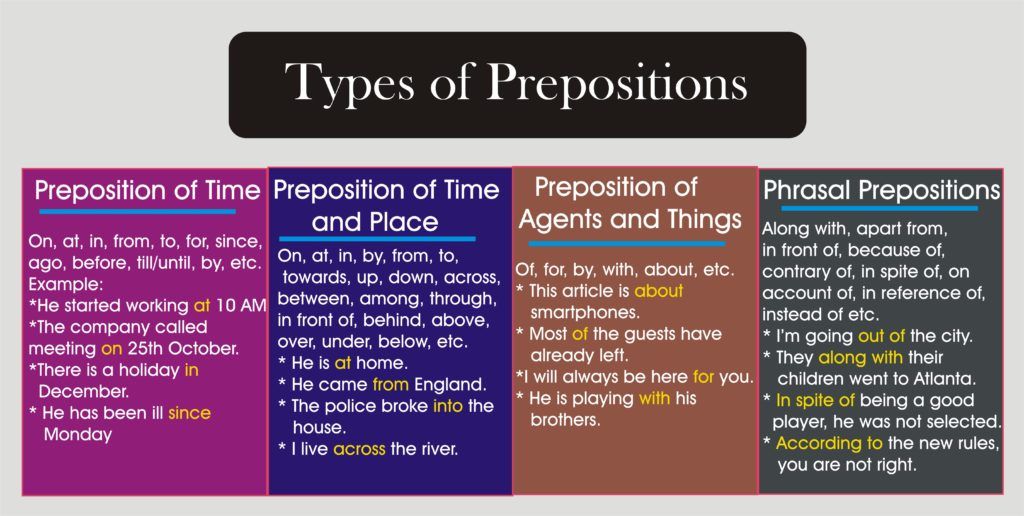 He was probably the most influential, successful, and best-known dance director of his time, acting as dance director for the Ziegfeld Follies, an annual show produced by Florenz Ziegfeld (1867 - 1932) from 1916 through 1919 and again from 1922 through 1923. He is credited with developing the Ziegfeld walk, which required the dancers to walk down stairs balancing enormous headpieces by simultaneously thrusting one hip forward and pushing the opposite shoulder forward.
He was probably the most influential, successful, and best-known dance director of his time, acting as dance director for the Ziegfeld Follies, an annual show produced by Florenz Ziegfeld (1867 - 1932) from 1916 through 1919 and again from 1922 through 1923. He is credited with developing the Ziegfeld walk, which required the dancers to walk down stairs balancing enormous headpieces by simultaneously thrusting one hip forward and pushing the opposite shoulder forward.
A Ziegfeld Follies performer from 1925.
Also known for their work on the Ziegfeld Follies were dance directors Julian Mitchell (1854 - 1926) and Albertina Rausch (1891 - 1967). Mitchell expanded on Tiller's idea of the chorus girl and developed the concept of a grand production number. Mitchell was responsible for the dancing in both The Wizard of Oz in 1902 and Babes in Toyland in 1903.
Albertina Rausch was the third dance director of the Ziegfeld Follies. She brought elements of her classical ballet training to Broadway by combining ballet arm movements, or port de bras, similar to those used in classical ballet, with less stylized movements and by combining the eccentric vaudeville toe dancing with Tiller precision. She set this dancing to modern music and called it American ballet (Kislan, 1987).
She brought elements of her classical ballet training to Broadway by combining ballet arm movements, or port de bras, similar to those used in classical ballet, with less stylized movements and by combining the eccentric vaudeville toe dancing with Tiller precision. She set this dancing to modern music and called it American ballet (Kislan, 1987).
Meanwhile, in Harlem, black musical theatre was also flourishing. Opening in 1911, The Darktown Follies was an all-black musical featuring a circle dance that involved everyone snaking around the stage with his or her hands on the hips of the next person in line. This circle dance was purchased by Florenz Ziegfeld to be used in his Follies. In 1923 the show Runnin ' Wild reached back to the Ashanti dancers of Africa and featured one of their dances on stage, called the Charleston.
Lines between black and white musical theatre began to blur as the whites began to borrow more black dances and perform them on white stages.
During this period, dance went from being an accompaniment for stage plays to earning a featured place on the stage. Thanks to The Black Crook and notable dancers like the Castles, Ned Wayburn, Julian Mitchell, Albertina Rausch, John Tiller, and Florenz Ziegfeld, dance began to earn a more prominent place in performances.
Save
Learn more about Beginning Musical Theatre Dance.
Theatrical Dance History
back
Theatrical Dance History
The origins of theatrical dance (essential form of the art known as ballet)
must date back from the times of Spanish domination and, more precisely, of
the settlement of the Missions by the Fathers of the Society of Jesus*. In 1607,
the Jesuitical Province of Paraguay was created, comprising, among other territories,
present-day Argentina. The period from that date till 1767, the year when the
priests were expelled, witnessed character performances which were generally
religious and evangelizing, where a harmonious combination of prose theater,
music, dance and staging elements served both a didactic and an artistic purpose
clearly associated with the general guidelines set by the missionaries.
On the other hand, Spanish dance became a usual practice in our land. Escuela Bolera* or Spanish Classical School was a regular and habitual presence which developed till the early 19th century. Not only dancers but also comedians themselves took part in these performances in the context of theatrical shows. In the first quarter of the 19th century, the first figures with a professional and academic background appeared: the Touissant*, the Cañete* and the Catón*. Divertissements, solos, character dances, duets (including mime-drama, as the ones practiced by the Catón with their Napoleonic ballets) filled our theaters.
In 1867, the first choreographic performances with integral ballets were offered.
In the earlier Colón Theater the Rousset Company* made its debut, staging
the major romantic ballets: Giselle, La Sylphide, Catarina and others, together
with pieces from the Escuela Bolera. In 1860 and 1861, the Thierry Company*
with Celestina and Oscar Bernardelli became the most important group which had
visited Buenos Aires until then. Almea, La Sylphide, Esmeralda and many others
composed the repertoire which was performed by Italian Virginia Ferrari and
Celestino De Martino. This company enjoyed a great success and a similar triumph
would crown, in 1883, the Italian
In 1860 and 1861, the Thierry Company*
with Celestina and Oscar Bernardelli became the most important group which had
visited Buenos Aires until then. Almea, La Sylphide, Esmeralda and many others
composed the repertoire which was performed by Italian Virginia Ferrari and
Celestino De Martino. This company enjoyed a great success and a similar triumph
would crown, in 1883, the Italian
Choreographic Company which staged the famous Mansotti*'s Excelsior, under the choreographic direction of Raffaelle Grassi and with the much admired Emma Bessone (a dancer with a great renown in Italy and Russia). Montplaisir's Brahma and Luigi Danessi's Messalina were known by the public in the next years, confirming the extraordinary success and popularity of ballo grande and the great Italian artists.
In 1903, Ludovico Saracco's Company offered the local premiere of Delibes's
Coppelia with Ida Ronzio; the series of Italian choreographers and dancers kept
on at the new Colón Theater (inaugurated in 1908). The choreographers
Francioli, Cammerano, Coppini, Vitulli and dancers like Mazzucchelli, Fornarolli,
Battaggi and Zucchi took part in the baillabili of operas and, in 1916, in the
re-run of Excelsior, staged by Francioli.
The choreographers
Francioli, Cammerano, Coppini, Vitulli and dancers like Mazzucchelli, Fornarolli,
Battaggi and Zucchi took part in the baillabili of operas and, in 1916, in the
re-run of Excelsior, staged by Francioli.
In 1913 y 1917, there appeared Diaghilev's Ballet Russes* with Nijinsky, Karsavina,
Bolm, Lopokva, Tchernicheva, Cecchetti, etc. Argentina knew then the aesthetics
of modern ballet with Michel Fokin, Nijisky's The Faun and Massine's first ballets,
which became a remarkable experience for the cultural elite. Anna Pavlova's
troupe (1917, 18, 19 y 28)* and Isadora Duncan (1916)* also worked in Buenos
Aires. Towards 1922, the training activities of the schools of the Colón
Theater started (although in 1918 a little group of Argentine dancers trained
by master Vitulli had performed in the Theater). The teachings of Pierre Michailowsky,
Olenewa, Jakovleff, Galantha and other artists shaped the national artists who,
in 1925, would perform in the first show of the Ballet Company of Colón
Theater: The Golden Cock, by Rimsky-Korsakov directed by Adolf Bolm.
During its first ten or fifteen years, the Ballet Company (the oldest academic group in South America) was identified with Diaghilev's artists: Nijinska Romanov, Smirnova, Dubrovska, Wiltzac, Schollar, Fokin, Spessiva and Lifar (1934)*. The first Argentine prima ballerinas were: Dora del Grande, Leticia de la Vega and Blanca Zirmaya; then there would be María Ruanova (with a brilliant international record) and Lide Martinoli (trained in the Scala of Milano).
By the time when, Antonia Mercé staged her Amor Brujo for the Colón,
the repertoire had included works like The Sylphs, Carnival, The Ghost of the
Rose, The Fire Bird, Thamar, The Consecration of Spring, Lifar's Prometheus,
among other pieces. Margarita Wallmann* was appointed as choreographic director
of the Ballet from late 1930s till 1940s. Trained in the school of Mary Wigmann,
Wallmann developed the ballet of grand show, with the particularly remarkable
Honegger's oratorio Jeanne d'Arc in the pyre.
Balanchine* worked for our Ballet in 1942. Monte Carlo Ballets with Massine
and the Original Ballet Russe of Colonel Basil* also performed in the early
1940.
Since the 1960s, the Colón Ballet started to present the major classical
productions staged by Carter, Nureyev, Prebil, Belfiore, Galizzi and Makarova,
together with P. Lacotte's La Sylphide, E. Martinez's Coppelia and Profokiev's
ballets.
Towards 1985, the triumph of two young figures: Julio Bocca* and Maximiliano
Guerra* (winners in Moscú and Varna) would give ballet an exceptional
popularity. The international career of the two dancers confirmed their local
success.
In the last seasons, the Colón gave the contemporary ballet d'action
an important place with productions signed by Kenneth McMillan and John Cranko:
Romeo and Juliet; The Taming of the Shrew and Onegin.
back
|
Argentina Hotels |
F. |
Privacy Policy |
About us |
Vacation planner |
Policies |
Site Map |
Feeback |
Dance theater as a phenomenon of choreographic art (on the example of the Sevastopol Academic dance theater named after Vadim Elizarov)
References:
Illarionova, E. S. ) / E. S. Illarionova. - Text: direct // Culturology and art history: materials of the IV Intern. scientific conf. (Kazan, June 2018). - Kazan: Young scientist, 2018. - S. 41-45. — URL: https://moluch.ru/conf/artcult/archive/292/14030/ (date of access: 12/23/2022).
Keywords: choreography, dance theatre, choreographic performance, show, character.
Relevance. The current studies state the presence of various dance theaters, but do not give a clear definition of this phenomenon.
Purpose. To reveal the features of the dance theater as the highest form of choreography on the example of the Sevastopol Academic Dance Theater named after V. Elizarov. nine0009
Conclusions. Dance theater is a unique phenomenon in choreography, as it combines all the features of theater and dance.
In the second half of the 20th century, theaters of dance, movement, and plasticity arose everywhere in Russia. In the mid-1970s, Giedrius Mackevicius' Moscow Theater of Plastic Drama emerged. The very first performance, staged in 1975, "Overcoming" (about the life of Michelangelo), brought fame to the theater. Then there were "The Star and Death of Joaquin Murieta", "Snowstorm" (based on A. Blok's poem "The Twelve"), "Glitter of the Golden Fleece", "Ballad of the Earth", "Seasons", "Yellow Sound", "And longer than a century the day lasts” (according to the prose of Chingiz Aitmatov). The performances of Giedrius Mackevicius combined elements of folk dances and acrobatics, pantomime and clowning, complemented by a synthesis of music and lighting [9].
The performances of Giedrius Mackevicius combined elements of folk dances and acrobatics, pantomime and clowning, complemented by a synthesis of music and lighting [9].
The plastic dance theater of Olga Bavdilovich, a choreographer from Vladivostok, arose in the 80s during a deep stagnation. It was soon renamed the Chamber Dance Theatre; in Novosibirsk, Natalia Fixel created the Theater of Contemporary Dance. Known in our country and abroad is the theater "Provincial Dances" (directed by Tatyana Baganova). In its work, the theater synthesizes the canons of various European and American dance schools, combining choreographic art, plastic and dramatic. "Provincial Dances" is one of the first avant-garde groups of post-perestroika Russia, which defined such a concept as modern dance. The Independent Troupe of Alla Sigalova, which at 90-e acquired the status of a dance theater.
In Moscow in the early 90s, such topical theater projects appeared, such as, for example, the Saira Blanche Theater by Oleg Sulimenko and Andrey Andrianov; "Expressive plastic class", created by Gennady Abramov at the Anatoly Vasiliev Theater, and a little later "Sasha Pepelyaev's Kinetic Theater". Sasha Pepelyaev created the Moscow Association of Dance Theaters "TSEKH". The main goal of the association is to support and develop modern dance, dance theater - a new genre for Russian theatrical art, a genre that has been actively developing since the beginning of 90s of the XX century. According to the members of the Association, the theater began with dance and returns to it again [ibid]. It should be noted that all the above dance theaters are based on the vocabulary of modern sports dance. In their performances, they use dance, pantomime, and other means of expression to create an image.
Sasha Pepelyaev created the Moscow Association of Dance Theaters "TSEKH". The main goal of the association is to support and develop modern dance, dance theater - a new genre for Russian theatrical art, a genre that has been actively developing since the beginning of 90s of the XX century. According to the members of the Association, the theater began with dance and returns to it again [ibid]. It should be noted that all the above dance theaters are based on the vocabulary of modern sports dance. In their performances, they use dance, pantomime, and other means of expression to create an image.
What is dance theater? After all, there are already some norms of modern ballroom dancing. And the theater involves visual perception - not only dance, but also the plot, the image of the hero, moving objects, changing scenery, costumes [13]. And in the dance there must be an action - as an analogue of the text in the drama. Currently, there is no clear definition of such a thing as dance theater. In our article, we will consider the essence of such a form of choreography as a dance theater on the example of the Sevastopol Academic Dance Theater named after V. Elizarov. nine0009
In our article, we will consider the essence of such a form of choreography as a dance theater on the example of the Sevastopol Academic Dance Theater named after V. Elizarov. nine0009
In modern choreographic art, the Sevastopol Academic Dance Theater named after Vadim Albertovich Elizarov occupies an important place. This theater is one of the few choreographic theaters in the world whose work is based on the vocabulary of ballroom dance.
The history of the Sevastopol Academic Dance Theater fully reflects the history of the formation and development of ballroom dancing in the Soviet Union and Russia. Sevastopol Dance Theater was founded on December 17, 1999 years on the basis of the Sevastopol dance club "Victoria" [7,18]. The founder and creative inspirer of the Sevastopol Dance Theater is Vadim Albertovich Elizarov. In 2009, by order of the Minister of Culture and Tourism of Ukraine, the Sevastopol Dance Theater was awarded the title of "Academic" [14]. In 2013, within the framework of the International Tournament "Dance Stories" in Moscow, Vadim Albertovich was awarded the diploma "Legends of Ballroom Dance". In 2014, Professor of the Department of Choreography of the Crimean University of Culture, Arts and Tourism, Laureate of the State Prize of the ARC, Honored Art Worker of the ARC, Honored Worker of Culture of Ukraine, People's Artist of Ukraine Vadim Albertovich Elizarov headed the Crimean branch of the Russian Dance Union (RTS). The Hero City of Sevastopol celebrated his merits with the title of “Chevalier of the Badge of Honor “For Services to the City”, the title of laureate of the “Public Recognition” contest [4]. nine0009
In 2014, Professor of the Department of Choreography of the Crimean University of Culture, Arts and Tourism, Laureate of the State Prize of the ARC, Honored Art Worker of the ARC, Honored Worker of Culture of Ukraine, People's Artist of Ukraine Vadim Albertovich Elizarov headed the Crimean branch of the Russian Dance Union (RTS). The Hero City of Sevastopol celebrated his merits with the title of “Chevalier of the Badge of Honor “For Services to the City”, the title of laureate of the “Public Recognition” contest [4]. nine0009
In 2017, by the Decree of the Government of the city of Sevastopol, the State Autonomous Cultural Institution "Sevastopol Academic Dance Theater" was named after Vadim Elizarov [18].
To date, the troupe of the Sevastopol Dance Theater consists of 50 artists, including 8 Honored Artists of Ukraine and 8 Honored Artists of the Autonomous Republic of Crimea. The basis of the team is made up of dancers brought up here in the theater, in the dance school. Borovsky A.R. at the conference “The Art of Dance in the Dialogue of Cultures and Traditions” in 2015 noted that children’s interest in dancing is falling: “The number of children coming to dance and sports clubs has decreased. Out of 20–30 children, only a few remain in a year or two” [2, p.60]. But in the Sevastopol Dance Theater we see a different picture. Dance theater studios are in demand. Children are engaged in the studios of ballroom dance, sports, oriental, modern, ethnic dance. After the dance school, teenagers enter the Victoria dance club (at the dance theater). That is, the Sevastopol Dance Theater, providing continuous progressive choreographic education on the spot, educates future dancers. After 2016, a lot of artists came to the team from the cities of Russia - Moscow, the Volga region, Siberia, the Far East, as well as from Ukraine (from the Lugansk and Donetsk regions). The leading pair of dancers Alexander Elizarov and Natalia Ivanova are three-time champions of Ukraine in ten dances, champions of Russia among professionals, holders of the World Cup, Honored Artists of Ukraine.
Borovsky A.R. at the conference “The Art of Dance in the Dialogue of Cultures and Traditions” in 2015 noted that children’s interest in dancing is falling: “The number of children coming to dance and sports clubs has decreased. Out of 20–30 children, only a few remain in a year or two” [2, p.60]. But in the Sevastopol Dance Theater we see a different picture. Dance theater studios are in demand. Children are engaged in the studios of ballroom dance, sports, oriental, modern, ethnic dance. After the dance school, teenagers enter the Victoria dance club (at the dance theater). That is, the Sevastopol Dance Theater, providing continuous progressive choreographic education on the spot, educates future dancers. After 2016, a lot of artists came to the team from the cities of Russia - Moscow, the Volga region, Siberia, the Far East, as well as from Ukraine (from the Lugansk and Donetsk regions). The leading pair of dancers Alexander Elizarov and Natalia Ivanova are three-time champions of Ukraine in ten dances, champions of Russia among professionals, holders of the World Cup, Honored Artists of Ukraine. Vadim Albertovich Elizarov was a talented teacher. Many of his students connected their lives with dance. He often said to the dancers: “You can stumble on the stage, and the audience will forgive you, but they will never forgive indifference ...” [4]. nine0009
Vadim Albertovich Elizarov was a talented teacher. Many of his students connected their lives with dance. He often said to the dancers: “You can stumble on the stage, and the audience will forgive you, but they will never forgive indifference ...” [4]. nine0009
The Sevastopol Dance Theater has its own repertoire, consisting of choreographic performances and dance shows based on ballroom and modern dances.
The theater team made a revolution in ballroom choreography, maintaining high requirements for the performance of ballroom dance, expanded the scope of self-expression and offered the viewer a holistic performance. As in the drama theater, in the dance theater a choreographic performance is created on the basis of a dramatic or musical work in accordance with the director's plan and under his leadership, through the joint efforts of the choreographer, actors, artist, costume designer. From the point of view of the dramaturgy of dance, performing skills in choreographic art are similar to performing skills in acting. In the art of acting, the performer is the actor, and the embodied artistic image is the role. “The artistic image is a way and form of mastering reality in art, characterized by an inseparable unity of sensual and semantic moments. This is a concrete and at the same time a generalized picture of life, created with the help of the artist’s creative imagination and in the light of his aesthetic ideal” [10]. nine0009
In the art of acting, the performer is the actor, and the embodied artistic image is the role. “The artistic image is a way and form of mastering reality in art, characterized by an inseparable unity of sensual and semantic moments. This is a concrete and at the same time a generalized picture of life, created with the help of the artist’s creative imagination and in the light of his aesthetic ideal” [10]. nine0009
“A choreographic image is a holistic expression in the dance of feelings and thoughts, of human character. Figurative dance is meaningful, emotional, filled with inner meaning" [1, p. 379]. The main task of the performers in ballroom dance is to convey the features of the role through choreography. Related features of choreographic and theatrical arts make it possible to create works by means of theatrical art in any kind of choreography. In modern ballroom dancing, this criterion is reincarnation. nine0009
Plastic is one of the aspects of the reincarnation of an actor. Together with the choreography of the plastic, the most important part of the process of translating the role. Along with plasticity, there are some other aspects of the reincarnation of the performer. These aspects include the process of experiencing, interaction with a partner, the creation of an external image by means of expressiveness, such as makeup, facial expressions, costume.
Together with the choreography of the plastic, the most important part of the process of translating the role. Along with plasticity, there are some other aspects of the reincarnation of the performer. These aspects include the process of experiencing, interaction with a partner, the creation of an external image by means of expressiveness, such as makeup, facial expressions, costume.
To date, the theater's repertoire includes a number of choreographic works known to the general public, which are based on popular plots of world literature and drama, as well as the best examples of world music: "Carmen", "Notre Dame de Raris", "Pygmalion", "Argentinean Tango”, “Favorites”, “Love Story”, “Cabaret Express”, “Fantasy”, “Her Name is Rose”; performances for children - The Snow Queen, The Nutcracker, The Bremen Town Musicians, Pinocchio, Harry Potter, Masha and the Bear, Ali Baba and the Forty Thieves. nine0009
In the performances of the Dance Theater, all types of choreography are used - classical, modern, folk. Ballroom dance, like any art form, has a lot of its own rules, features and canons. It clearly states what is possible and what is not. In its choreographic performances and shows, the Sevastopol Dance Theater completely departed from the established rules. Vadim Albertovich Elizarov always said: “Music is the determining factor in choreography, and music inspires” [12]. For example, in the choreographic performance "Carmen" both passionate flamenco and unrestrained Latina sound. In the production of this choreographic performance, the “bolero” is used 3 times as the leitmotif of the artistic image of Carmen. nine0009
Ballroom dance, like any art form, has a lot of its own rules, features and canons. It clearly states what is possible and what is not. In its choreographic performances and shows, the Sevastopol Dance Theater completely departed from the established rules. Vadim Albertovich Elizarov always said: “Music is the determining factor in choreography, and music inspires” [12]. For example, in the choreographic performance "Carmen" both passionate flamenco and unrestrained Latina sound. In the production of this choreographic performance, the “bolero” is used 3 times as the leitmotif of the artistic image of Carmen. nine0009
The classics have always been and remain an inexhaustible source of inspiration for directors and directors. The performance "Notre Dame de Рaris" ("The Hunchback of Notre Dame"), which premiered in December 2002, became the undisputed success of the Sevastopol Dance Theater, its hallmark.
In his production of the performance, V. A. Elizarov did not deviate from the literary canvas of Victor Hugo, and the music of Richard Cocciante only emphasized the non-standard stage solutions. In this choreographic performance, dancers express the complexity of human relationships and experiences through dance. nine0009
In this choreographic performance, dancers express the complexity of human relationships and experiences through dance. nine0009
To deepen the dramaturgy of the performance, V. Elizarov introduced the image of Notre Dame Cathedral. For this, a two-level decoration was made, which personifies the Cathedral.
One of the acting heroes of the choreographic performance "Notre Dame de Paris" is the people. In this interpretation of the images, V. Elizarov, as it were, pushed the boundaries of ballroom dance. In the first scene of the performance - "The Court of Miracles" - a den of the Parisian bottom, the choreographer, with the help of modern dances, developed vivid genre paintings in the smallest detail: acrobats, jugglers, gypsies, wandering profit seekers, vagabonds. The performance uses different genres of choreography: ballroom dance, hip-hop, pantomime. Esmeralda's dance brings the necessary variety to the choreography of the performance. Her dance is a living story about her love, about her suffering.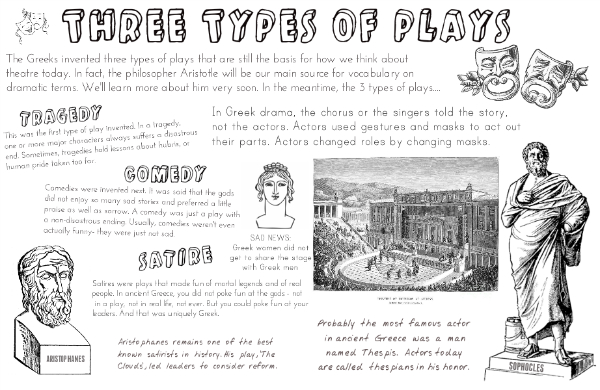 In almost every scene of this performance, a synthesis of ballroom, classical and modern choreography is visible, which greatly helps to reveal all the images of the main characters and participants in the action. nine0009
In almost every scene of this performance, a synthesis of ballroom, classical and modern choreography is visible, which greatly helps to reveal all the images of the main characters and participants in the action. nine0009
The staging of the play "Notre Dame de Paris" is significant for the theater, as it marks a new creative stage. Firstly, this is the first decorated performance in the Sevastopol Dance Theatre; secondly, for the first time a professional artist was invited to work here; thirdly, for the first time the action of the performance is carried out simultaneously on two stage levels. Performance on two levels is an interesting stage solution that enhances the dramatic moments of the performance. The performance masterfully used stage lighting. nine0009
Classical performances of choreographic performances "Notre Dame de Raris", "Carmen" and today go with great success on the stage of the Sevastopol Academic Dance Theater.
Since 2003, the choreographic performance "Pygmalion" has been successfully staged on the stage of the Sevastopol Dance Theater. The performance is based on Bernard Shaw's play "Pygmalion" (the legend of Pygmalion and Galatea [44, II, p.312]). V. Elizarov, with the help of different styles and directions of choreography, offers a new reading of this plot - he transfers the action of the plot to the ballroom environment. Elizarov has Mr. Higgins as a ballroom dance teacher, and Eliza is a representative of one of the directions of modern dance - hip-hop, the lifestyle of most young people of our time [11]. nine0009
The performance is based on Bernard Shaw's play "Pygmalion" (the legend of Pygmalion and Galatea [44, II, p.312]). V. Elizarov, with the help of different styles and directions of choreography, offers a new reading of this plot - he transfers the action of the plot to the ballroom environment. Elizarov has Mr. Higgins as a ballroom dance teacher, and Eliza is a representative of one of the directions of modern dance - hip-hop, the lifestyle of most young people of our time [11]. nine0009
The action of "Pygmalion" staged by the Sevastopol Dance Theater takes place at the beginning of the 21st century, today, next to us. The plot of the play is very simple. Two gentlemen, Mr. Higgins and Mr. Pickering, make a bet that a hip-hop street dancer can be retrained to become a ballroom dancer. In the choreographic production of the theater, in the miraculous transformation of Eliza into an educated lady, music plays a huge role, which is the protagonist of the performance. Music vividly reflects the opposite of two worldviews: the eternal confrontation between classics and modernity.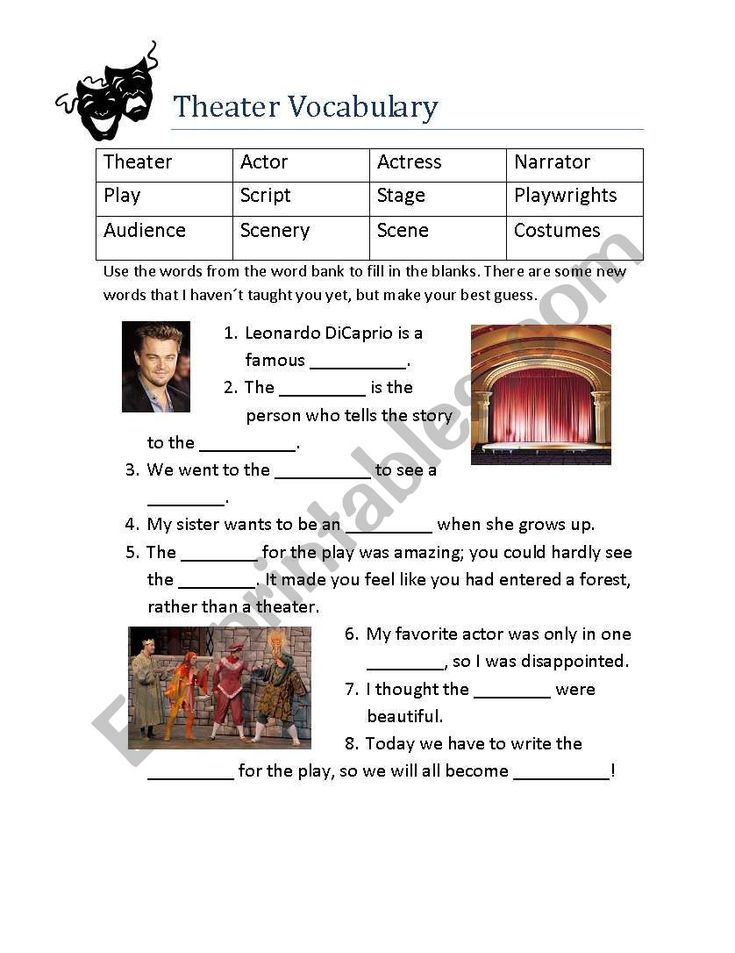 Both ballroom dancers and hip-hop dancers meet on the same stage of the theater. nine0009
Both ballroom dancers and hip-hop dancers meet on the same stage of the theater. nine0009
The effect of the viewer's presence and participation in the action is created by the stage of the dance theater itself, which, like the ancient one, is not separated from the hall by the usual ramp. As scenery for Pygmalion, turning pictures were used, which, according to the plot of the performance and the action, depicted either a secular ball or a slum.
The choreographic performance "Pygmalion" received two nominations at the competition of the Highest Theater Prize of Crimea "Golden Griffin", which was held in March 2016: "Best Musical Solution" and "Best Choreography, Plastic, Pantomime", was awarded the Prize of the Supreme Council of the Republic of Crimea [18] . nine0009
The dance show "Favorites" has collected the best numbers that are included in the golden fund of the Sevastopol Dance Theater. The show also included the number "Spain". Formation "Spain" consists of three parts. In total, 10 couples take part in the room, plus one solo couple. A distinctive feature of "formation" in dance theater is high speed, rapidly changing pace of performance. The show "Favorites" also includes a humorous number "Retro", consisting of four parts, in which the viewer is shown pictures of the development of sports dances in the 20-60s of the last century with humor. The combination of the incongruous in this number, the mixing of performance styles, the play of the artists create a comic effect and make the audience smile. nine0009
In total, 10 couples take part in the room, plus one solo couple. A distinctive feature of "formation" in dance theater is high speed, rapidly changing pace of performance. The show "Favorites" also includes a humorous number "Retro", consisting of four parts, in which the viewer is shown pictures of the development of sports dances in the 20-60s of the last century with humor. The combination of the incongruous in this number, the mixing of performance styles, the play of the artists create a comic effect and make the audience smile. nine0009
In 2012, the premiere of the show "Broadway" took place. The show is based on famous world musicals, including Chicago, Romeo and Juliet, West Side Story, Beauty and the Beast, Copacabana and others. A separate musical theme of the theater is the images of such legendary personalities of world music as Frank Sinatra, Whitney Houston, Michael Jackson. The show is very bright, with a constant change of musical rhythms, unexpected dance images and bright, spectacular costumes.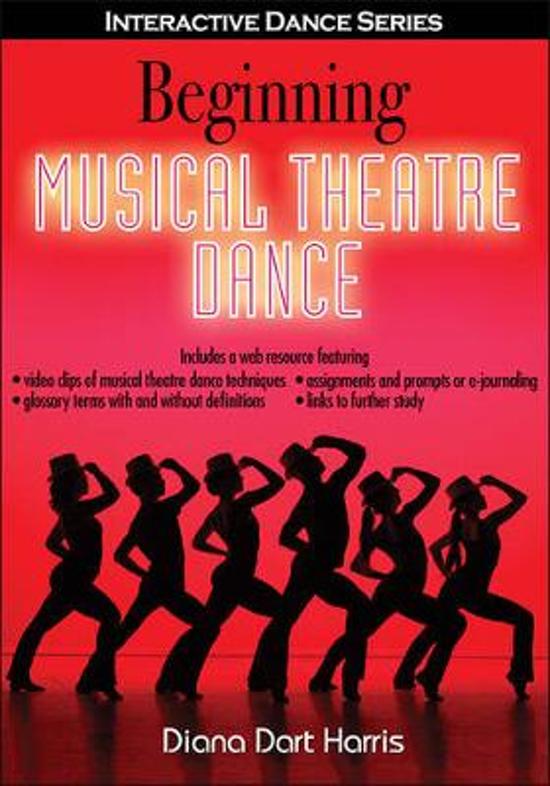
In October 2016, the theater presented a new performance, Cabaret Express, to the audience. The performance is a remake and at the same time an excursion into three world-famous musical films - Bob Fossey based on the Broadway musicals of the same name: "Cabaret" with Liza Minnelli in the title role, "Victor / Victoria" directed by Blake Edwards to the music of Henry Mancini, "Moulin Rouge" with Nicole Kidman and Ewan McGregor. All three stage compositions are musically and choreographically interconnected. To complement the perception of the viewer, a literary narrative is woven into the performance. In the center of each part of the composition is the story of the heroine, around whom passions, love, jealousy boil. Each heroine has her own destiny and the presenter brings the viewer up to date, telling the story of the heroine “behind the scenes”. "Cabaret Express" included a variety of choreographic numbers and styles. These are ballroom dances, and oriental, Latin American, Indian, jazz modern, flamenco, fusion. 150 new costumes were created for the performance. Another component of the performance was its vocal design performed by the dance theater artist Valentina Rybakova, which enhances the emotional impact on the viewer. The performance "Cabaret Express" is a vivid example of the synthesis of choreography, vocals and dramaturgy in the creative work of the Sevastopol Academic Dance Theater. nine0009
150 new costumes were created for the performance. Another component of the performance was its vocal design performed by the dance theater artist Valentina Rybakova, which enhances the emotional impact on the viewer. The performance "Cabaret Express" is a vivid example of the synthesis of choreography, vocals and dramaturgy in the creative work of the Sevastopol Academic Dance Theater. nine0009
Everything that the dance theater shows is amazingly bright, professional, breathtakingly beautiful. As Boris Eskin, a member of the Israel Writers Union, noted: “Today, in the world of professional dance, mind-blowing technique can no longer surprise anyone. Here, as in sports, the bar has been raised so high that only special qualities can distinguish from the general series of worthy ones: constant and magnetic creative charge, originality of thinking, unlimited dedication of each member of the team and an aura of sincere friendship within it ... A professional theater that works for at the intersection of art and sports is a special phenomenon. From sports, Elizarov has a desire to win in every concert, in every performance. From art - courage and inspiration" [15]. nine0009
From sports, Elizarov has a desire to win in every concert, in every performance. From art - courage and inspiration" [15]. nine0009
Thus, we note that today ballroom dancing has become a self-sufficient art, drawing reserves from many types of choreography. New forms of choreographic art are being created, among which the dance theater acts as the highest form of development of choreography. The combination of theater form and ballroom choreography is a unique phenomenon. Such a striking example is the Sevastopol Academic Dance Theater named after V. Elizarov. In their performances, dance theater artists masterfully collect and vividly demonstrate all the directions that exist in choreography: classical ballroom choreography, folk, modern and ethnic dances, elements of classical ballet. The repertoire of the Sevastopol Dance Theater includes bright dance shows, large concert programs, and choreographic performances. nine0009
Literature:
- Ballet: encyclopedia / Editor-in-Chief.
 Yu. N. Grigorovich.- M.: Soviet Encyclopedia, 1981.
Yu. N. Grigorovich.- M.: Soviet Encyclopedia, 1981. - Borovsky A. V. The system of values and personal guidelines in the profession of a sports ballroom dance teacher / A. V. Borovsky // The art of dance in the dialogue of cultures and traditions: materials of the V International scientific and practical conference, February 27, 2015 - St. Petersburg: SPbGUP , 2015.- p.54–61.
- Goncharov A. A. The search for expressiveness in the play / A. A. Goncharov.- M .: Art, 1959.
- Zenina T. Master. Choreographer. Teacher [Text] / T.Zenina // Glory of Sevastopol.- 2017.- May 31.
- Katysheva D. N. Ballroom dance: on the issue of genetic, semantic resources and artistic foundations / D. N. Katysheva // The art of dance in the dialogue of cultures and traditions: materials of the V International scientific and practical conference, February 27, 2015 - St. Petersburg: SPbGUP, 2015.- p. 8–15.
- Kuryumova N. Russian influenza began with the theater [Electronic resource] // http: // www.
 dance-net.ru/ru/articulation/history. text? id-2. nine0094
dance-net.ru/ru/articulation/history. text? id-2. nine0094 - Milina L. Business card of Sevastopol [Text] / L. Milina // Crimean truth. - 2008. - October 21.
- Myths of the peoples of the world: Encyclopedia in two volumes. - M .: Sov. encyclopedia, 1987.
- Nikitin V. Yu. Mastery of the choreographer in modern dance: Textbook. - M .: GITIS, 2011.
- Rusova N. Yu. Terminological dictionary-thezarus on literary criticism. — M.: Flinta; Science, 2004.
- Sandulova T. Elizarov has already created his “Galatea”: “Pygmalion” at the Dance Theater [Text] / T. Sandulova // Sevastopol News. - 2003. - November 12. nine0094
- Sandulova T. Vadim Elizarov: “There are very talented people in our city”... (September 24–25, the International Dance Festival Elizarov Dance Fest was held at the Dance Theater [Text] / T. Sandulova // Sevastopol News.- 2011.- October 5th.
- Tsarev M. I. What is a theater [Text] / M. Tsarev.- M.
 : Mol.gvardiya, 1960.- 48 p.
: Mol.gvardiya, 1960.- 48 p. - Shcherbakova E. 10 years of extravaganza [Text] E. Shcherbakova // Flag of the Motherland. - 2009. - December 10.
- Eskin B. Elizarov! Sevastopol! Fantastic!: About the tour of the Dance Theater in Israel [Text] / B. Eskin // Glory of Sevastopol. - 2006. - April 27. nine0094
- Yurzditskaya E. The World Cup is with Alexander Elizarov and Natalia Ivanova: About the dance school based on the Dance Theater [Text] / E. Yurzditskaya // Glory of Sevastopol. - 2005. - February 16.
- Yurzditskaya E. Everyone dances! And in Sevastopol. And on Broadway: Interview with the head of the Dance Theater V. Elizarov on the eve of the premiere of the play "Broadway" [Text] / E. Yurzditskaya // Glory of Sevastopol. - 2011. - August 30.
- Sevastopol Academic Dance Theatre. - [Electronic resource]. — URL: https://www.yelizarovtheatre.com/ nine0094
Basic terms (automatically generated) : Sevastopol dance theater, dance theater, ballroom dance, Sevastopol Academic theater, dance, choreographic performance, performance, theater, modern dance, name dance.
MODERN DANCE IN RUSSIA: A MAN DANCING ON THE VERGE
A new festival of contemporary choreography - "On the verge". He arose with a light hands of the former head of the Yekaterinburg (and now - Petersburg) branch of the "Alliance Française" Raul de Lumle. I picked up the idea, taking over its implementation, the famous Sverdlovsk Academic Theater musical comedy led by his energetic and close to the heart accepting the problems of modern stage director Mikhail Safronov. Music critic became the art director of the festival Larisa Barykina, one of the first analysts our contemporary dance. The intrigue of the festival the presence of an impressive French delegation (representatives of national choreographic centers, press, cultural institutions), the main whose task was to select performers and troupes to participate in the cultural programs "France-Russia" in 2010
Over the twenty years of contemporary existence in Russia little has changed in his relationship with the environment. As long as it remains a trend in art, going exclusively against the current. On the round at the table held at the end of the festival, they also talked about the lack of professionalism, and the lack of any support, and the need for special training authors and performers of modern dance. Even about the original foreignness of the idea of modern dance, with its pathos of individual freedom, the spirit of the domestic unconscious with its craving towards collectivism and self-denial. nine0009
As long as it remains a trend in art, going exclusively against the current. On the round at the table held at the end of the festival, they also talked about the lack of professionalism, and the lack of any support, and the need for special training authors and performers of modern dance. Even about the original foreignness of the idea of modern dance, with its pathos of individual freedom, the spirit of the domestic unconscious with its craving towards collectivism and self-denial. nine0009
Meanwhile, the interest of the public, who filled all five days venues of the festival to failure, which reacted violently to the performances of various bands, proved the opposite.
Choreographer's work-in-progress program opened Rashid Uramdan, little known to us, recognized one of the leaders of the new generation of modern dance in France. Two weeks before that, he taught students Faculty of Contemporary Dance Humanitarian University (the only such faculty in Russia) amazing things - melt like snow, and form with their plastic bodies some common body without organs, future protoplasm (or already past?) biographies, souls, views.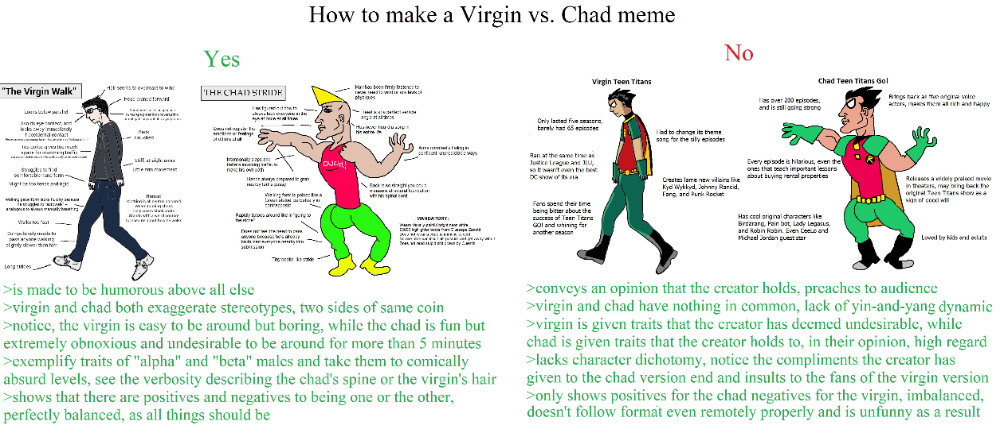 In combination with video projection, where the same students share their thoughts on fairly serious topics, as well as read the shocking testimonies of survivors war, occupation, mass executions, the show turned out non-trivial. nine0009
In combination with video projection, where the same students share their thoughts on fairly serious topics, as well as read the shocking testimonies of survivors war, occupation, mass executions, the show turned out non-trivial. nine0009
"Insomnia". Oleg Vaniev's company.
Photo by V. Pustovalov
I remember the debut of Oleg Vaniev — performance "Insomnia", a very entertaining spectacle, imbued with black humor "tale from the crypt". two couples young ghosts lunatically roam the stage and dangerously hang on stage structures, “turn on” the moon and even climb into coffin beds, trying to find a way to simple "inhuman" happiness... The artistic image of the performance arises from a bizarre connection of elements of fashionable erotic thriller with expressive medieval allegories: a spectacular bicycle race of one of the characters through the darkness cut through by dim light the scene is reminiscent of a satanic cortege. nine0009
The ARTform theater that survives in Tyumen thanks to catchy plastic performances and show programs, he calls "naive".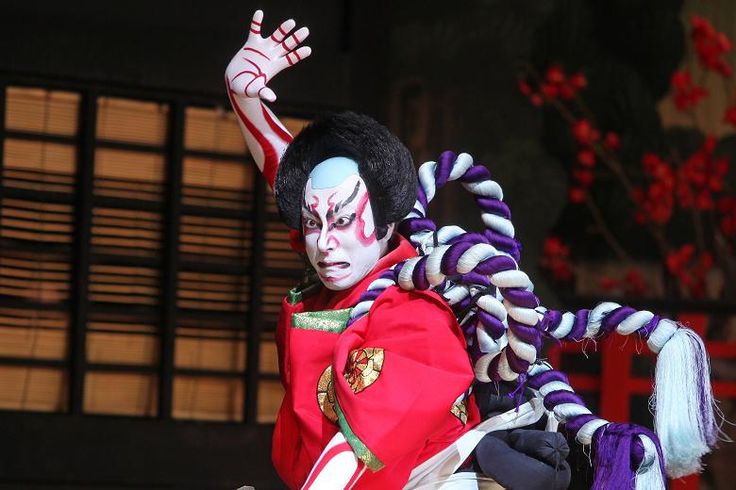 A young, energetic, charming troupe presented to the audience's judgment of the detailed choreodrama "The Bride". A simple story about marriage against your will and the destroyed girlish happiness unfolds against the background of scenes from the life of a certain popular village, with all its inhabitants, as well as rugs, panicles, felt boots. The troupe, which is made up of not only dancers, but also dramatic artists, smartly dress up cranks set by the choreographer, semi-acrobatic tricks and dashing ensemble passes to the music of Bregovic, largely adopting the characteristic characters of Kusturica. As for the dance (choreographer Oksana Shmatenok), then, although in this synthetic action (partly reminiscent of choreographic suites of decades of arts of the union republics) he has an applied role (it’s more like a danced pantomime), it does not look without interest. nine0009
A young, energetic, charming troupe presented to the audience's judgment of the detailed choreodrama "The Bride". A simple story about marriage against your will and the destroyed girlish happiness unfolds against the background of scenes from the life of a certain popular village, with all its inhabitants, as well as rugs, panicles, felt boots. The troupe, which is made up of not only dancers, but also dramatic artists, smartly dress up cranks set by the choreographer, semi-acrobatic tricks and dashing ensemble passes to the music of Bregovic, largely adopting the characteristic characters of Kusturica. As for the dance (choreographer Oksana Shmatenok), then, although in this synthetic action (partly reminiscent of choreographic suites of decades of arts of the union republics) he has an applied role (it’s more like a danced pantomime), it does not look without interest. nine0009
Sixteen-minute play “The Room of Thin threads", which choreographer Olga Zimina (Sarapul) performs with one of his students, - work really thin, plastically expressive. Endless polyphony of two moving bodies leads now to tough clashes, now to compromises, which, like everything else, new conflicts of relationships mother and growing daughter (and about this play), there is no end.
Endless polyphony of two moving bodies leads now to tough clashes, now to compromises, which, like everything else, new conflicts of relationships mother and growing daughter (and about this play), there is no end.
Rain. Okoe company.
Photo by V. Pustovalov
In the work of Alexander Gurvich from Yekaterinburg "Rain" is an obvious attempt to avoid literary completeness and clarity, give a stream of sensations, vague feelings, relationships that arise between people in their daily running, random collisions and meetings. Plots are about to emerge from touches, clashes, the looks of three young people and a fragile girls (performers - students of the Humanitarian University). And then they disappear, transform, float on top of each other like torrents of rain...
Evgeny Panfilov's Ballet Theatre, which made an attempt become a platform for creative realization young choreographers, presented the work of Larisa Alexandrova "Casting-off" (literally - "dropping").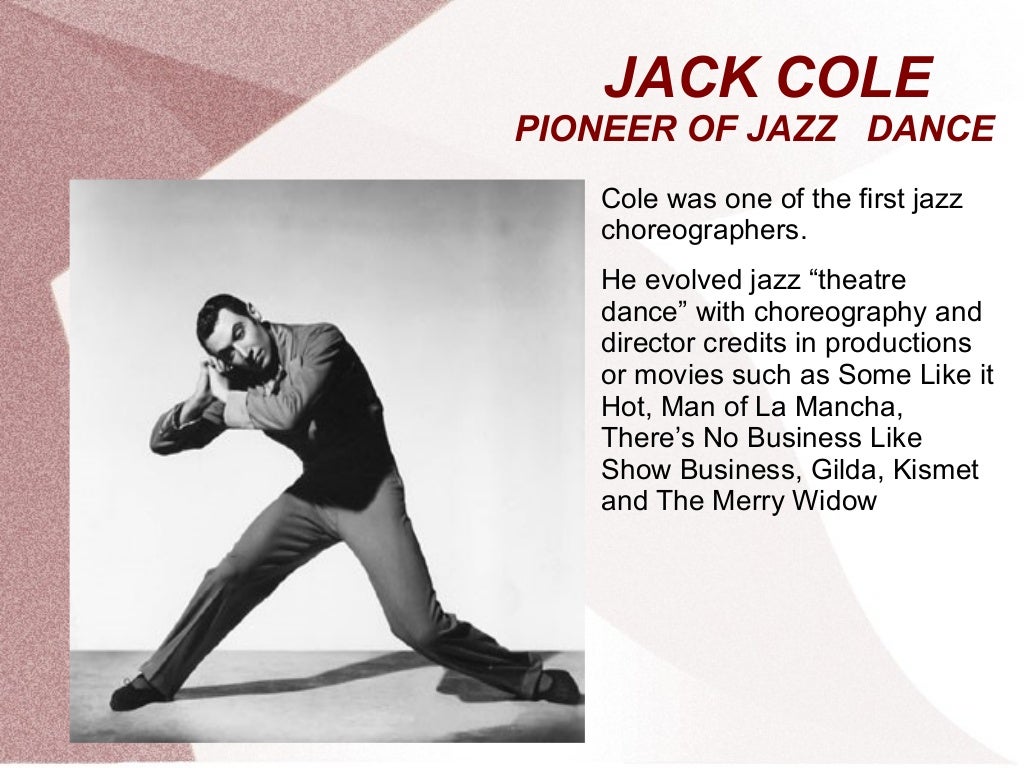 Judging by the group of women and men dancing sometimes together, sometimes apart, sometimes gently supporting each other, then attacking each other like an animal (black tailcoats - on white crinolines), - speech was about the eternal. About the attraction-repulsion of the male and feminine principles. About what is truly valuable - absolute freedom or devotion, someone's warmth the one and only. The idea that one cannot escape fate was clearly illustrated by a character in the spirit of the theater But (greetings from Martha Graham and Bejart!) in make-up, in bright clothes, on cothurns. He kept pulling and weaving red threads that bind - and sometimes confuse people into a tight knot of life. Panfilov dancers always harmoniously and with enthusiasm. But here's for more exact implementation of author's ideas to many performers (especially for performers) was not enough deep personal penetration, not ostentatious, but real, into so familiar to everyone and so vicissitudes are different for everyone.
Judging by the group of women and men dancing sometimes together, sometimes apart, sometimes gently supporting each other, then attacking each other like an animal (black tailcoats - on white crinolines), - speech was about the eternal. About the attraction-repulsion of the male and feminine principles. About what is truly valuable - absolute freedom or devotion, someone's warmth the one and only. The idea that one cannot escape fate was clearly illustrated by a character in the spirit of the theater But (greetings from Martha Graham and Bejart!) in make-up, in bright clothes, on cothurns. He kept pulling and weaving red threads that bind - and sometimes confuse people into a tight knot of life. Panfilov dancers always harmoniously and with enthusiasm. But here's for more exact implementation of author's ideas to many performers (especially for performers) was not enough deep personal penetration, not ostentatious, but real, into so familiar to everyone and so vicissitudes are different for everyone.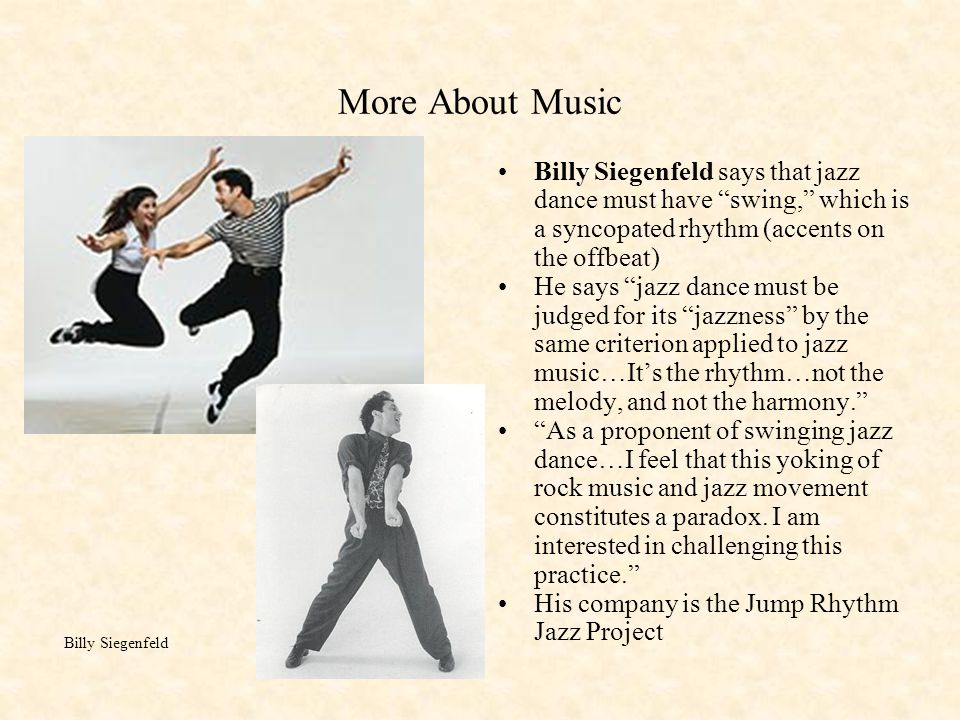 nine0009
nine0009
Masha Greif (Chelyabinsk Contemporary Dance Theatre) has already fully established itself as an independent choreographer. In the work "The Year of the Gray Goose" she together with the ensemble "Line" focused on the female topic. To the sounds of pity and spring calls are slender girls wash and beat linen, melting down ordinary gesture into lines and rhythms of the monotonous, mechanical, like the life of a simple Russian woman, dance. However, with the magical melodies of Nino Rota harsh everyday life seems to recede, in dreams of a sweet life, angular movements soften, quivering hands float, girls transform...
“After involvement. Part 2. Theater "Provincial Dances".
Photo by V. Pustovalov
Clay wind. Eccentric ballet by Sergei Smirnov.
Photo by V. Pustovalov
Khuri-khuri. Dance Theater "Kipling".
Photo by V. Pustovalov
The Provincial Dances Theater showed a play “After engagement. Part 2, which has already received "Golden Mask" To the beloved Baganovskaya theme of female-male, immersed in a fabulously ironic context, neurotic, insane rhythm of the big city.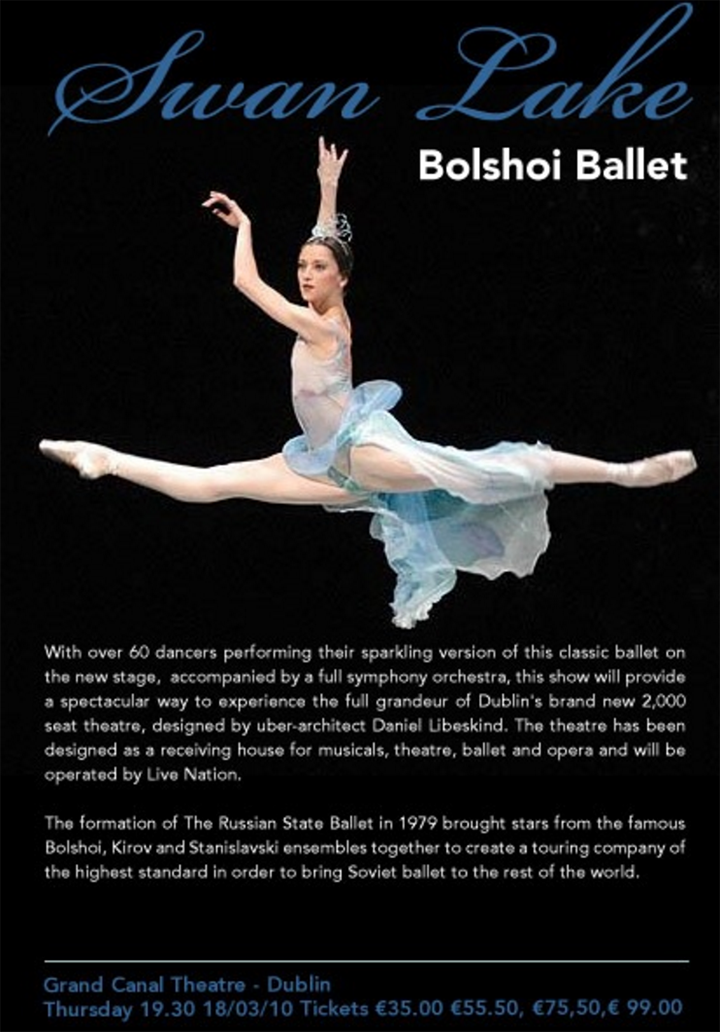 Disturbing music the mysticism of Gurdjieff gives birth to whimsical and broken drawing of non-stop dancing couples. She in the finale transforms this hellish dance into a slender and the strict gait-choir of an ancient but eternal dance. nine0009
Disturbing music the mysticism of Gurdjieff gives birth to whimsical and broken drawing of non-stop dancing couples. She in the finale transforms this hellish dance into a slender and the strict gait-choir of an ancient but eternal dance. nine0009
In the performance of the equally famous "Eccentric Ballet" "Clay Wind" (nominated for the "Golden Mask" -2009) the main character is funny touching little man, desperately fighting with the "big" world for the safety of one's own "I", choreographer Sergei Smirnov sends to ... prehistoric era. And dissolves in the crowd. Or rather, two as if descended from ancient bas-reliefs crowds of great people with their profile poses pressed to the body elbows and outstretched palms (quote from Fokine Faun!). Faced with horror and surprise they are in the same space. In an attempt to understand the other and find the first characters that unite gestures-words humanized…
The Kipling team, re-emerging at the cultural horizon (and how: as a nominee "Masks"!) in her work "Khuri-khuri" addressed for answers to painful women's questions to mythology ancient Indians. Here the woman is the basis world, and Khuri-Khuri are demons who, alas, sometimes this woman is possessed. (Here's a fresh interpretation eternal ballet plot!) However, the performance "Kipling" is not about the terrible transformations of the stupefied from the home routine of the keepers of the hearth, but just the opposite - about the great mystery, wisdom and joy of everyday being. The theme is not accidental in this wonderful a team of harmoniously dancing women - with their witty fantasy, equanimity and positive energy. nine0009
Here the woman is the basis world, and Khuri-Khuri are demons who, alas, sometimes this woman is possessed. (Here's a fresh interpretation eternal ballet plot!) However, the performance "Kipling" is not about the terrible transformations of the stupefied from the home routine of the keepers of the hearth, but just the opposite - about the great mystery, wisdom and joy of everyday being. The theme is not accidental in this wonderful a team of harmoniously dancing women - with their witty fantasy, equanimity and positive energy. nine0009
Many years ago Oleg Petrov brought to Yekaterinburg performance by Pal Frenac. Choreographer combining poetics shock, painful sexuality with moments of piercing tenderness, experimenting with states of gravity and weightlessness, introduced his own, special note in the rapid development of the new French wave. A couple of performances staged by him at different times for Petrov's dancers had a refreshing effect on Ural landscape. Then the performances started here put disciples and epigones of Frenac.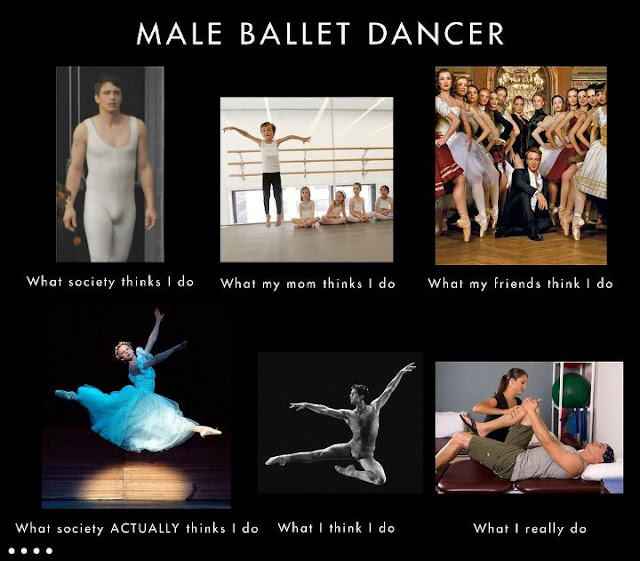 Taking over from him external signs of style - all these shocks and spasms not knowing the satisfaction of the flesh, the technique of non-linear montage of episodes, paradoxical intrusions some ballerinas in felt boots or acid roosters, they miss the most important thing: depth, coherence and understanding why all this is. In the performance Dance Theater "Hunger", staged by Balash Baranya, characters suffer and fight, sometimes - downright into the blood. All these "surface games", however, are spectacular only the first five minutes. nine0009
Taking over from him external signs of style - all these shocks and spasms not knowing the satisfaction of the flesh, the technique of non-linear montage of episodes, paradoxical intrusions some ballerinas in felt boots or acid roosters, they miss the most important thing: depth, coherence and understanding why all this is. In the performance Dance Theater "Hunger", staged by Balash Baranya, characters suffer and fight, sometimes - downright into the blood. All these "surface games", however, are spectacular only the first five minutes. nine0009
In his performance "Attraction" (the premiere took place at the beginning of the year at the Chatelet Theatre) Olga Pona strives the highest harmony of celestial bodies to believe whimsical human relations. And that's why he watches them distantly, as if in a television or a microscope. The episode is emblematic: the immobilized nude the human body, as on a scale, balances on a moving crossbar. Two creatures seem to expose his some mysterious measurements: perhaps trying to calculate where all these everyday passions and emotions were once placed in this body .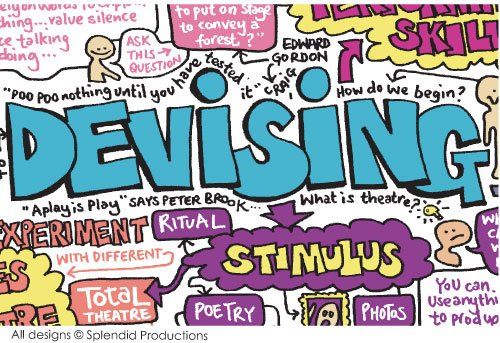 .. To the question: “Why are some drawn to each other with an irresistible force, while pushing others away with the same force?" choreographer responds with endless variety high-tech solo and ensemble structures where not people but particles: planets, atoms or ... Newton's apples - draw whimsical trajectories. Spinning, colliding, lining up into bizarre systems and constellations, again remain in airless solitude, contemplating harmony spheres. The dancers of this troupe seem flawless the metamorphoses of their bodies are fascinating. In the final, these bodies are carried away under the grate. spinning silver ball in unison with the music of the spheres. And absolutely unexpectedly for this seemingly absolutely technological and impartial work remains sharp feeling of vague anxiety, hopeless, cosmic loneliness ...
.. To the question: “Why are some drawn to each other with an irresistible force, while pushing others away with the same force?" choreographer responds with endless variety high-tech solo and ensemble structures where not people but particles: planets, atoms or ... Newton's apples - draw whimsical trajectories. Spinning, colliding, lining up into bizarre systems and constellations, again remain in airless solitude, contemplating harmony spheres. The dancers of this troupe seem flawless the metamorphoses of their bodies are fascinating. In the final, these bodies are carried away under the grate. spinning silver ball in unison with the music of the spheres. And absolutely unexpectedly for this seemingly absolutely technological and impartial work remains sharp feeling of vague anxiety, hopeless, cosmic loneliness ...
The main result of the festival, which presented a kind of snapshot of what is happening at the moment in the Ural region (Ekaterinburg - Chelyabinsk - Perm) and nearby villages (Tyumen region and Udmurtia), it can be considered a statement of the fact that the patient is alive.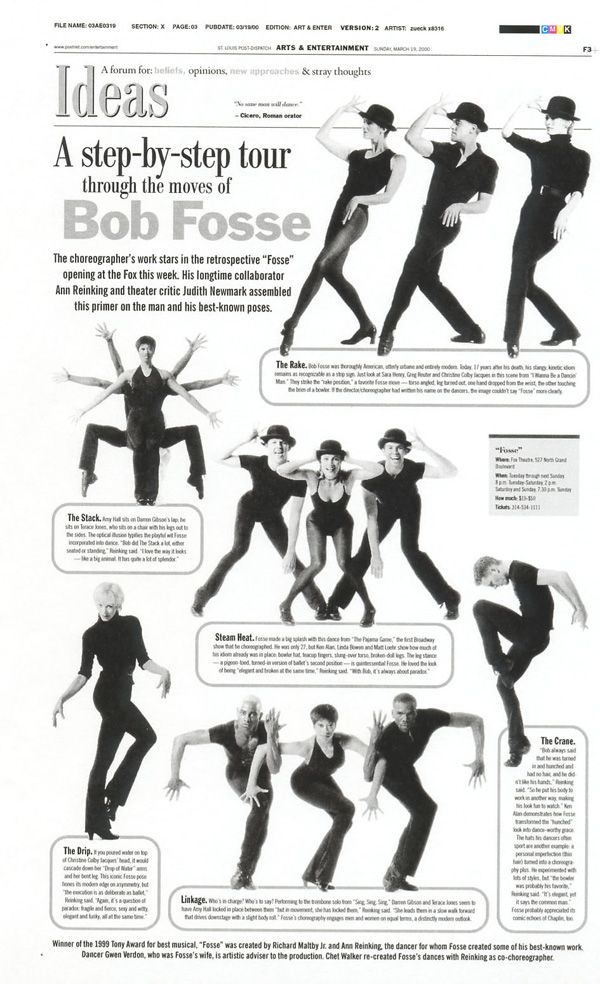 And updating the question: what is modern dance? Many concepts and phenomena, denying the usual canons of beauty, rhythmic orderliness of structures, dramatic intelligibility that came into the world in our devoid of great style and faith in a bright future era? freedom plastic self-expression? Search all possibilities bodily articulation, not expressed still in the word themes and meanings? Reckless dive into the texture of everyday life and work with an ordinary gesture, errors of the body, convicting him of secret desires and fears? And in general - can this be considered dance art? nine0009
And updating the question: what is modern dance? Many concepts and phenomena, denying the usual canons of beauty, rhythmic orderliness of structures, dramatic intelligibility that came into the world in our devoid of great style and faith in a bright future era? freedom plastic self-expression? Search all possibilities bodily articulation, not expressed still in the word themes and meanings? Reckless dive into the texture of everyday life and work with an ordinary gesture, errors of the body, convicting him of secret desires and fears? And in general - can this be considered dance art? nine0009
Any concepts are good for manifestos and theoretical studies. When the dancer enters the stage, no concept will work if he and what is happening with him on stage will not be interesting to the viewer. After all, in the final analysis, the main question of any art the question remains - what is a man?
Modern dance paradox: avoiding the ritual rhetoric of reliable, established forms, find your own way to answer this question.
 A.Q.
A.Q.